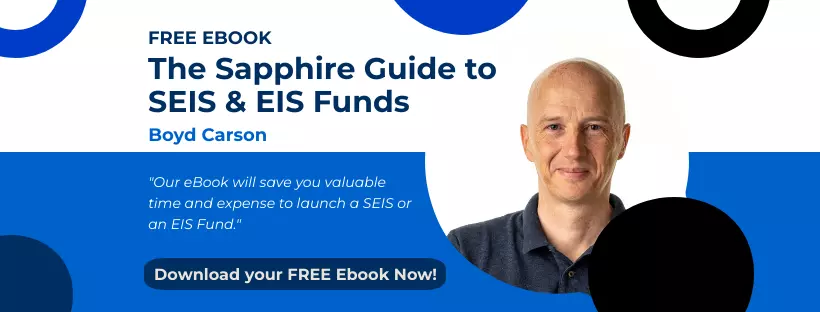 This month we are spotlighting the topic of EIS, SEIS and SITR funds (abbreviated as EIS funds). An area of recent focus within the investment community is due diligence, arising mainly from the FCA’s recent publication of TR16/1: Assessing Suitability: Research and due diligence of products and services. The publication is a thematic review of the topic to ensure that advisors take appropriate measures and care when advising retail clients (ie. The general public) of what to invest in.
This month we are spotlighting the topic of EIS, SEIS and SITR funds (abbreviated as EIS funds). An area of recent focus within the investment community is due diligence, arising mainly from the FCA’s recent publication of TR16/1: Assessing Suitability: Research and due diligence of products and services. The publication is a thematic review of the topic to ensure that advisors take appropriate measures and care when advising retail clients (ie. The general public) of what to invest in.
The FCA’s research identified that the “root cause for poor consumer investing outcome” is attributed to the “poor quality of advisors' research and due diligence.” Other root causes included incorrect risk profiling and the cost associated with changes in investment portfolios.
In light of this, we put together a list of areas that investors should "due diligence" and research for themselves, with suggested action points to assist in the review, in order to make the best decision possible by reducing the risk of solely relying on an advisor's recommendation.
1. Ensure that the marketing documentation can be relied on.
Depending on the type of EIS fund you are looking into, the marketing documentation (i.e. Investment Memorandum, teaser, and any other type of promotional activity) will be subject to varying levels of scrutiny and thus may offer differing assurances of accuracy.
- An unregulated fund (i.e. managed portfolio), if marketed under the Conduct of Business Sourcebook ("COBS") , will be subject to more stringent regulation as to the wording and the representations made, than say a portfolio being marketed as an exempt communication under FSMA 2000 Financial Promotions Order ("FPO").
- A FPO promotion will be restricted on what type of investors can receive the documentation / promotions (no retail investors - i.e. can only be circulated to sophisticated, or certified high net worth investors).
- With relation to approved funds, if they are an Unregulated Collective Investment Scheme (“UCIS”), they are also banned from promoting to retail investors.
Action point: when researchingEIS funds, ensure that you understand what type of fund it is and what legislation regulates it, whether it is appropriate for your type of investor category, and adjust the level of your reliance on the investment documentation accordingly.
2. Check the track record of the fund manager.
The experience and accreditation of the fund manager will arguably be the most important aspect to “due diligence” for deciding on which EIS fund to invest in. It goes without saying that the manager needs to have the appropriate level of FCA permission in order to manage funds and that should be checked first. Per the FCA thematic review, it was concluded that the optimal advisors are the ones which have a “culture of challenge” in their firm’s core beliefs. Furthermore, according to the research it was concluded that the size of an advisory firm is not a barrier or a deciding factor as to whether they are best suited to manage the fund.
Action point: research the fund manager, ensure that the appropriate permissions are in place, and don't consider the size of the firm as an indicator of the fund manager's accreditation.
3. Do your own risk assessment.
Do not solely rely on an advisor's or fund manager's risk assessment. Make up your own mind through understanding the selection criteria applied for investment selection. Also, as suggested in the previous point, take time to research the fund manager and obtain an understanding of their firm's culture and “way of doing things”. You may take the advisor’s self-assessment of the risk involved as an initial indication of how they perceive the fund, but you must maintain a healthy level of skepticism and rely on your own judgement, as risk appetites vary significantly between investors simply because everyone’s circumstances are different.
Action point: form your own option on the fund's risk profile by applying a healthy level of skepticism.
4. Understand the fees charged.
As mentioned prior, one of the root causes of poor consumer outcomes in investing relates to the costs associated with investing. It should be noted that advisor / management fees are regulated by the Retail Distribution Review (“RDR”). Typically there would be an initial charge on the placement made in each portfolio company. For unapproved funds there may be an annual management fee levied as well. When selecting which EIS fund to invest in, it is prudent to compare fee structures of competing funds and you understand what charges to expect over the investment’s holding period.
Action point: understand the fund's fee structure and perform a high level market comparison.
Whether you are seeking to diversify your investment portfolio, or you would like to become part of early stage investing in hope of riding the next unicorn, the SEIS, EIS and SITR schemes offer tax incentives to help reduce the exposure on risk finance placements. Investing in EIS funds spreads the risk across a number of companies, and thus could provide a better investment option. The above pointers in selecting the appropriate fund should assist you in making an informed decision. By trusting your own judgement and not relying solely on advisors, you can reduce the risk of poor investment outcome.



